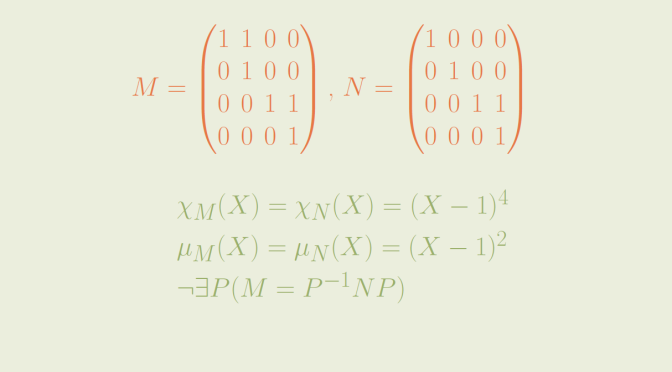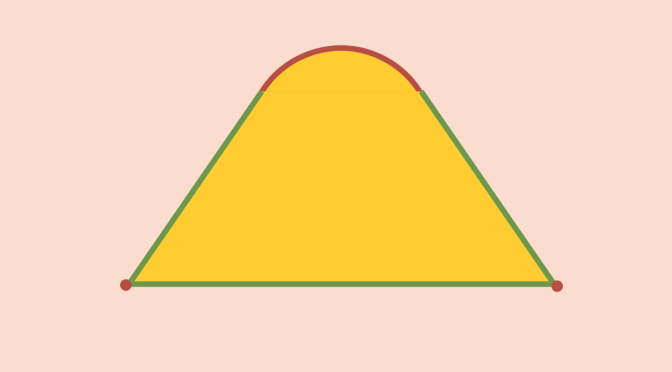Let \((X,d)\) be a metric space. Then a map \(T : X \to X\) is called a contraction map if it exists \(0 \le k < 1\) such that \[d(T(x),T(y)) \le k d(x,y)\] for all \(x,y \in X\). According to Banach fixed-point theorem, if \((X,d)\) is a complete metric space and \(T\) a contraction map, then \(T\) admits a fixed-point \(x^* \in X\), i.e. \(T(x^*)=x^*\).
We look here at counterexamples to the Banach fixed-point theorem when some hypothesis are not fulfilled.
First, let’s consider \[\begin{array}{l|rcl}
f : & \mathbb R & \longrightarrow & \mathbb R \\
& x & \longmapsto & x+1 \end{array}\] For all \(x,y \in \mathbb R\) we have \(\vert f(x)-f(y) \vert = \vert x- y \vert\). \(f\) is not a contraction, but an isometry. Obviously, \(f\) has no fixed-point.
We now prove that a map satisfying \[d(g(x),g(y)) < d(x,y)\] might also not have a fixed-point. A counterexample is the following map \[\begin{array}{l|rcl} g : & [0,+\infty) & \longrightarrow & [0,+\infty) \\ & x & \longmapsto & \sqrt{1+x^2} \end{array}\] Since \[g^\prime(\xi) = \frac{\xi}{\sqrt{1+\xi^2}} < 1 \text{ for all } \xi \in [0, +\infty),\] by the mean value theorem \[\vert g(x) - g(y)| = \vert g^\prime(\xi)\vert |x-y| < |x-y| \text{ for all } x, y \in [0, +\infty).\] However \(g\) has no fixed-point. Finally, let's have a look to a space \((X,d)\) which is not complete. We take \(a,b \in \mathbb R\) with \(0 < a < 1\) and for \((X,d)\) the space \(X = \mathbb R \setminus \{\frac{b}{1-a}\}\) equipped with absolute value distance. \(X\) is not complete. Consider the map \[\begin{array}{l|rcl} h : & X & \longrightarrow & X \\ & x & \longmapsto & ax + b \end{array}\] \(h\) is well defined as for \(x \neq \frac{b}{1-a}\), \(h(x) \neq \frac{b}{1-a}\). \(h\) is a contraction map as for \(x,y \in \mathbb R\) \[\vert h(x)-h(y) \vert = a \vert x - y \vert \] However, \(h\) doesn't have a fixed-point in \(X\) as \(\frac{b}{1-a}\) is the only real for which \(h(x)=x\).





